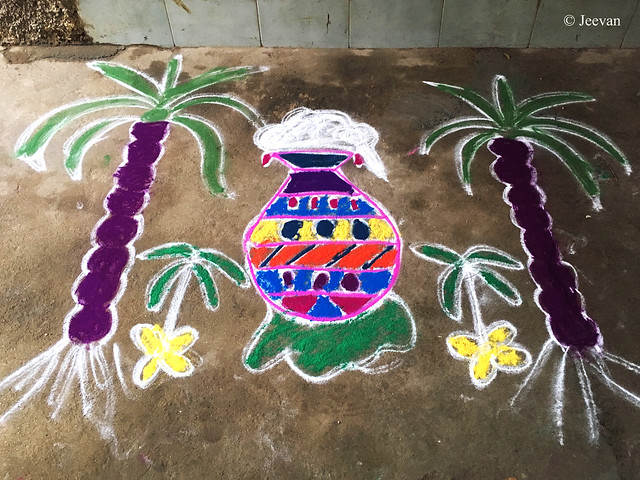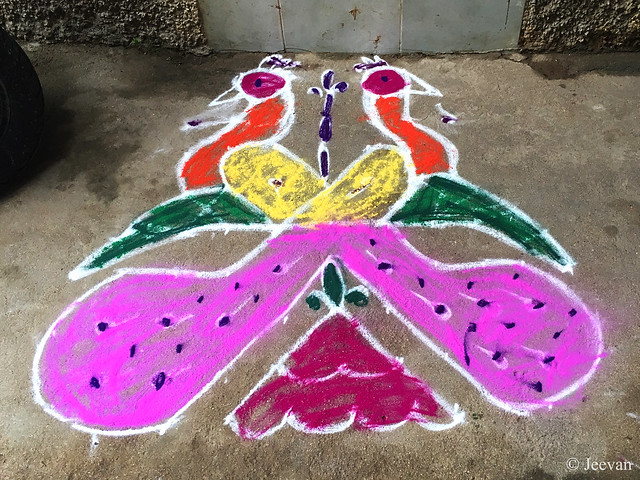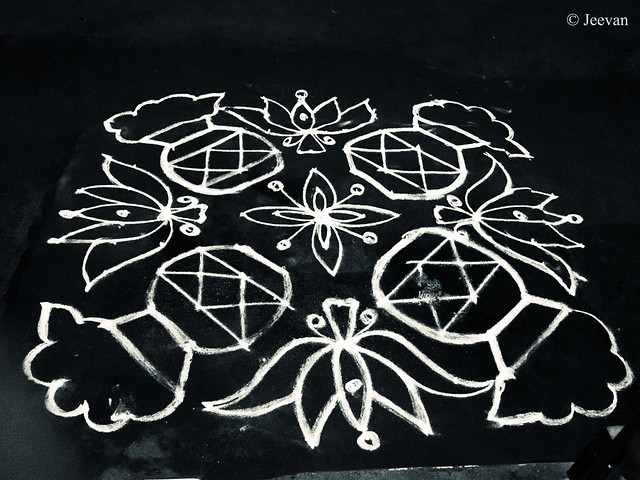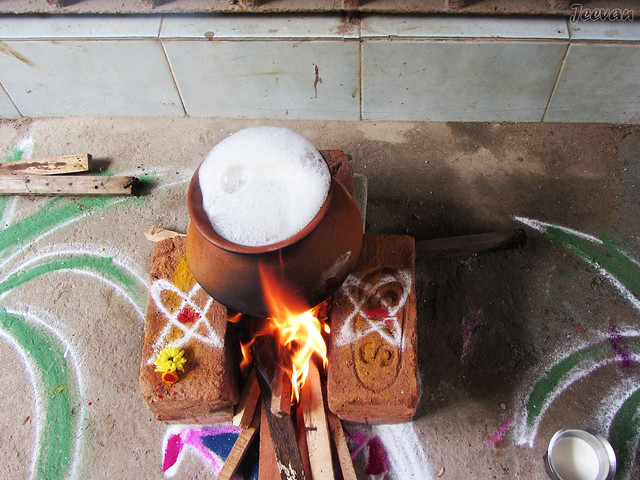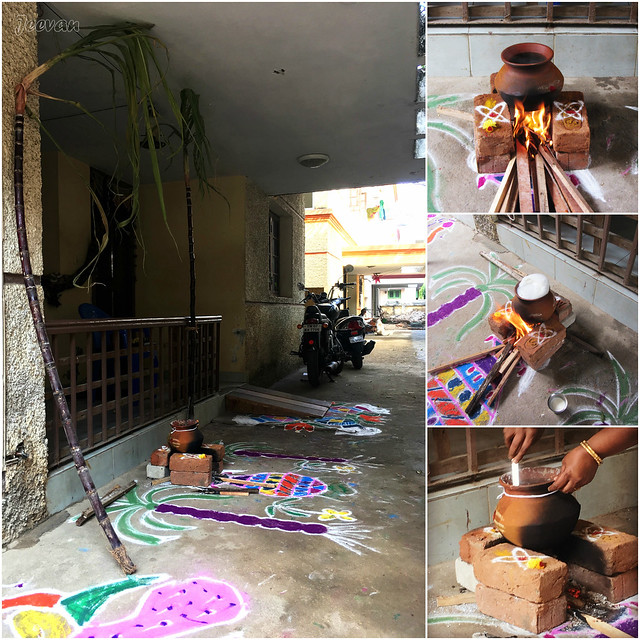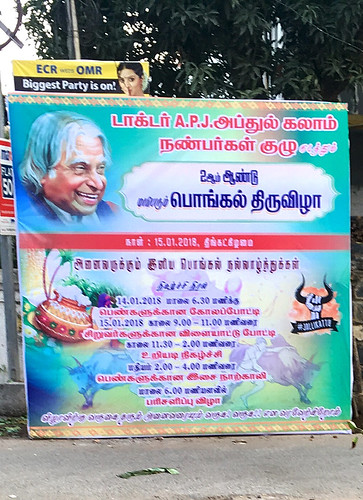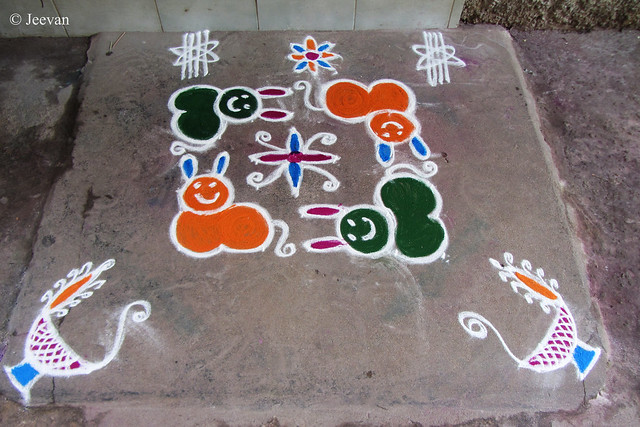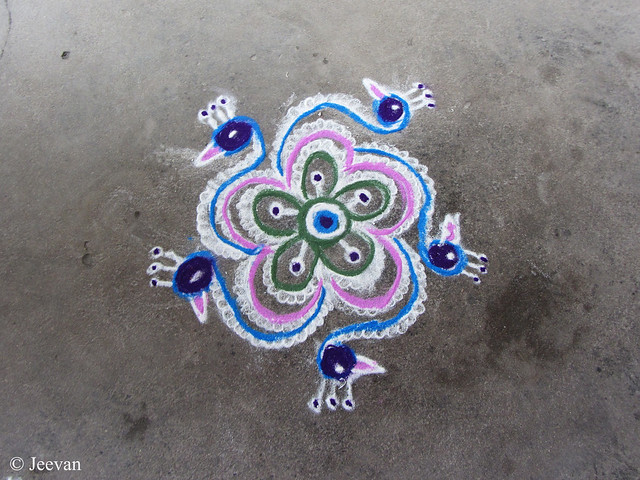Back on
my travel experience to Munnar, and like I told in my earlier post on same it
was drizzling or slowly showering as we moved out of the Udumalapet guest
house. As we loved the taste of the dinner from Hotel Ariya Bhavan there, we
hadn’t anything to choose for breakfast and as I want to be around the Tiger
Reserve as early possible we took parcel from the hotel and ate before we enter
the forest area. The
Anamalai Tiger Reserve here comes under Amaravathi
division, which is a part of the Anamalai Hills, a range of mountains in the
southern part of Western Ghats.

I have
been to the other parts of Anamalai Tiger Reserve, including the tourist
attracts Topslip and Valparai and I have even went to Amaravathi Dam and
Crocodile park adjoining the Tiger Reserve. A ranger whom we met here took us on
a brief ride into the forest when checking Amaravathi Nagar in 2008, but since
I know the road from here goes to Munnar, I wanted to take this road when I
travel to same. Actually it become a dream for me to take this road, as it
passes through two wildlife sanctuaries, it would be a great opportunity to see
wild animals at their abode.
 |
| Herd of deer staring at us through bushes (all pics can be enlarged) |
I want to
be there early in morning so that more animals could be sighted, but we couldn’t
make up before 9 am, the time we reached the forest check post. While dad went
to sign the register, the guard who came checking the car protested for taking our
pet dog into the tiger reserve and he insist for veterinary certificate to give
permit. We are told that allowing outside animals have a risk of spreading
disease to other wild animals, if the one have any and the veterinary
certificate is must to ensure the dog is healthy. But his higher officer just
instructed to not let down the dog anywhere until moved out of the tiger
reserve.
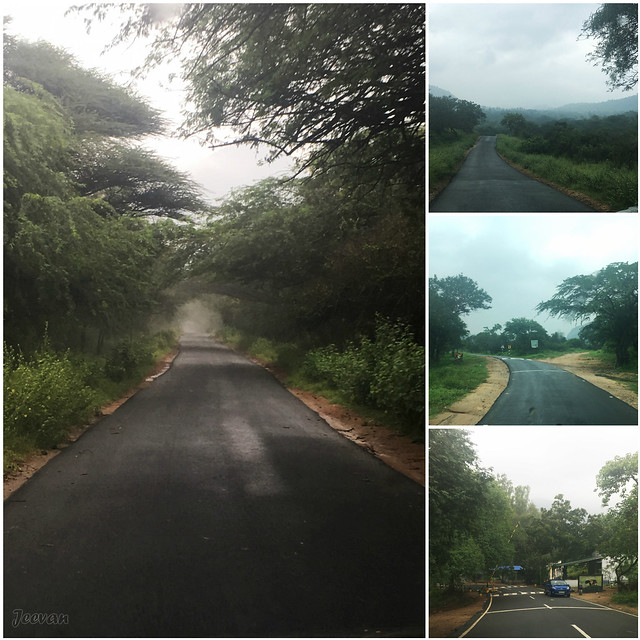 |
| The traffic free forest road though Anamalai Tiger Reserve, and the border check post near Chinnar wildlife sanctuary |
We could
understand why they are strict with outside animals but we haven’t faced
anything like this earlier even though we have stayed in Topslip (one of the
core area), Valparai and Cloud Mountain with high fauna. We aren’t complaining
anyway but rather happy that forest department is conscious in preserving the
wild animals and this would help us be cautious in future travels with dog. The
entire stretch of tiger reserve was wet and drizzling with haze, though the
weather was pleasant it don’t give hand in spotting wild animals, perhaps they
too don’t like dampness or hideaway in absence
of sunlight.
They told
only in evening animals come into sight mostly or should be early in morning,
but this unusual weather of showering and fog kept away the little
opportunities. We encountered only couple of vehicles in opposite and few
overtaking us, as we drove slowly, the road was far empty. The Anamalai Tiger Reserve
is a blend of wet evergreen forest, marshes and grass lands covering a total
area of 1479 sq. km includes a core area of 958. Sq. km and Amaravathi cover
172.5 sq. km.
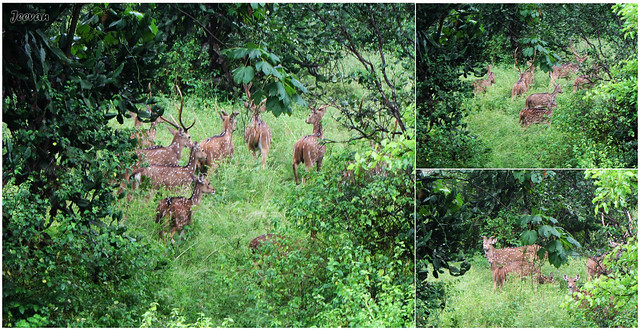
Within
few kms into the forest we saw a herd of Chital, aka spotted deer, staying and
staring from the thicket. My cousin has keen eyes for deer, and alike many a
time; he spotted the deer which could be easily missed. It looked like a family
of deer, from fawns to well gown with big antlers. They stared at us for few
seconds before turn their attention somewhere and marched forward. Where
there’s lot of deer means a favourable circumstance for tigers, while deer’s
are there favourite prey and according to the census the tiger reserve is home
to 32-36 tigers.

Few kms
from there the backwaters of Amaravathi reservoir come to sight. Perhaps due to
less water, it looked like swamp and guess animals would come visiting this
place to drink water or feed on vegetation.
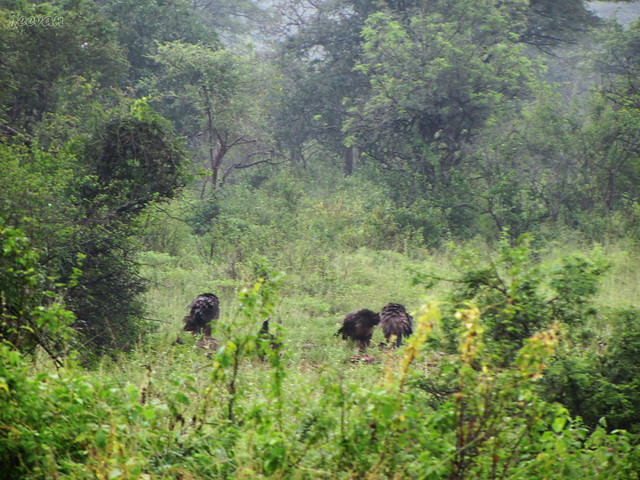 |
| Vultures on prey |
Our next
stop was an encounter of vultures prey on some flesh at distance. First thought
it was peahens but they haven’t look alike and this is the first time seeing
vultures in wild. As we near the border check post (between Tamil Nadu and
Kerala) found some peahens around grazing buffaloes, which we though was wild
ones but realized soon it should belong to the people around check post. The
Chinnar River that crosses here marks the border between the two states, from
where the Chinnar Wildlife Sanctuary begins – which could be my later post.





